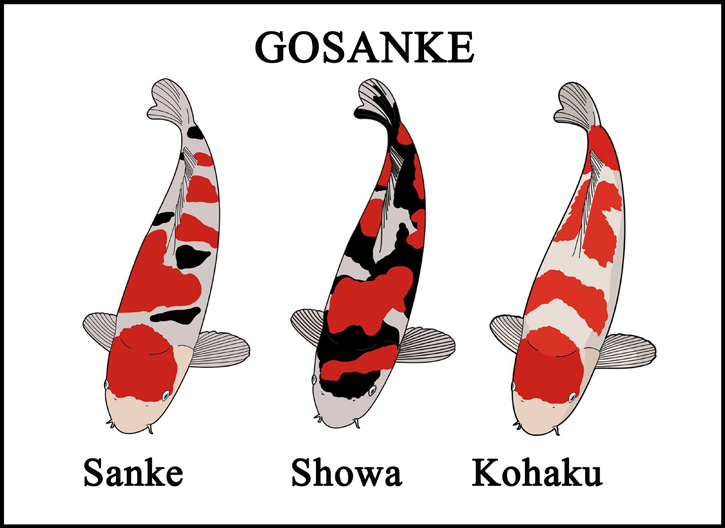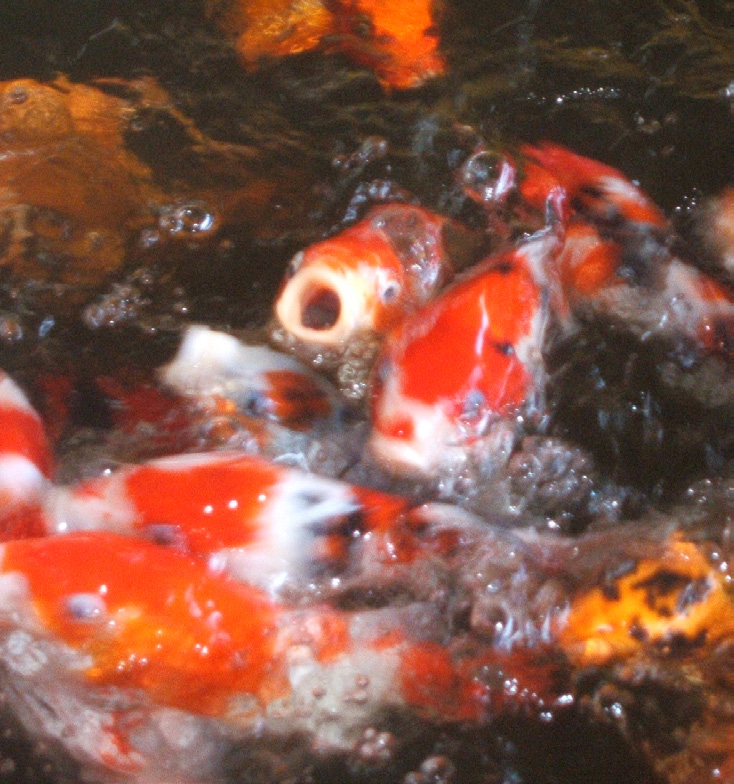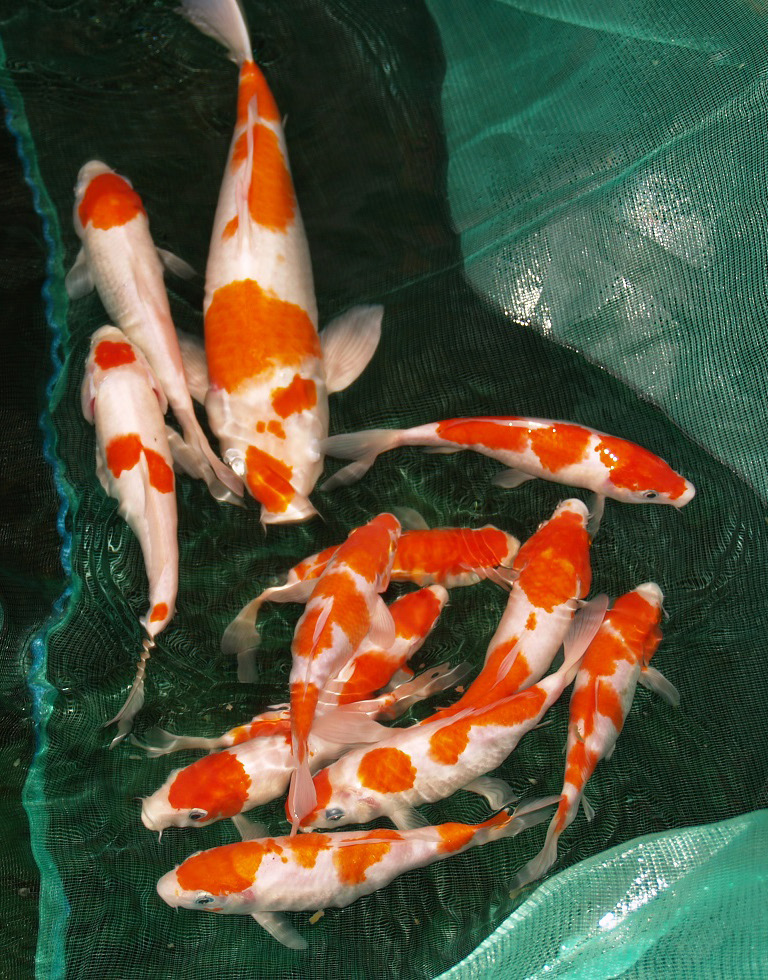I have been in the fish hobby long before the “Little Mermaid” movie was shown, and have kept aquarium and saltwater fish. In 2003, I began being interested in koi; it was the same year “Finding Nemo” was shown in theaters. Now, after more than a decade, “Finding Dory” is showing, and I felt this would be a great time to write and share my experience in koi keeping.
Pet shops also sell koi as aquarium fish. I discourage this practice since koi tend to grow as large as one meter. I have seen koi placed in large aquariums and I cannot deny that even in aquariums, they look very nice.
“Nishikigoi” or “koi” means “carp.” They are ornamental varieties of domesticated common carp popularly used to populate outdoor ponds or water gardens. Carp are a large group of fish originally found in Central Europe and originally domesticated in East Asia, where they are sold as food.

They are cold water fish, and their ability to survive and adapt in many climates and water conditions allowed them to adapt to countries such as China and Japan. The Japanese took koi development very seriously. They have raised the standard and are the leaders in the industry.
VARIETIES
The most common variety is the Gosanke, and its three most popular sub-varieties in Japan, are the Kohaku, Taisho Sanshoku or Sanke, and Showa Sanshoku varieties.

Kohaku: The Kohaku has a white body, with red markings across the body. The types of kohaku, based on their patterns, are:
- Nidan: two-step Kohaku pattern
- Sandan: three-step pattern
- Yondan: four-step pattern
- Inazuma: lighting strike pattern
Sanke: are like Kohaku except they have a black “stepping stone” pattern that runs along their back. They are white Koi with red and black patterns. The black pattern must not show up on the head.
Showa: are black Koi, with a white and red pattern. They are very much like sanke except they have black on their heads,other popular varieties include the Ogon, Utsuri, Bekko, Asagi, and Doitsu. In the Philippines, a koi with more than two colors is commonly called “multicolor.” They are popular for beginners due to their assortment of colors.
Popular places in Philippines for breeding are those places with good quality and which are abundant in rain such as Pampanga, Davao, Gilligan City, Cagayan De Oro, and Cebu. These are areas that produce the most local koi. Breeding quality koi is difficult because they produce only 1-5%. Farm breeders normally sell them from 3-4 inches, which does not show the full potential of koi.
Common questions asked of me regarding pond setup are, how large would the pond and filtration needed, and what varieties and number of koi will I need? I will reply to them with questions such as, how do you visualize your pond will look like? What are your resources and limitations?
FACTORS TO CONSIDER IN TAKING CARE OF KOI

Pond: refers to those located both outdoors and indoors. Both have their advantages and disadvantages. An indoor pond keeps your koi safe from predators, and keeps them secure from sudden weather changes weather and free of dirt. Outdoors, the fish have a better opportunity for sun exposure, which is good for coloration.
The bigger the better: Remember that a single koi can reach up to 30-36 inches
Depth: The advice often given regarding this is to make the pond depth 6 feet or more. This depends, always on what your objectives for keeping koi are. Do you really intend to grow them to their maximum size? Are there no children at risk of drowning? A depth of 3-4 feet is a good start for a standard pond.
Basic shape: It’s better to stick to rectangles or squares as these are easier to clean. But some prefer kidney- or guitar-shaped ponds.
Filtration: I always recommend that keepers invest in filtration since this is your 24/7 dialysis-like machine for your koi’s health. Some notes:
- The bigger the volume, the better
- Choose a filter designed for effectiveness and efficiency
- Consider the kind of filter media used
- Look into the ease of maintenance
- Should be proportional to its biological load (number of fish and their size )
- Consider the size of the pump to be used for the most cycles of water
Fish: This is the best part of the pond project. What is your purpose in caring for koi: as pets, for appreciation, or for show competition? You also need to decide if you want an active pond or a serene pond. There is a pond full of koi in Nuvali Sta. Rosa Laguna. When customers feed them, the fish go into a frenzy. This is an example of an active pond. You will have difficulty raising quality koi in this kind of pond setup. A serene pond is one where someone simply appreciates the slow, quiet movement of the koi. This can be obtaining by keeping only a few koi.
CHOICE OF KOI
Three major things to consider in finding a good koi are body shape, color, and its pattern. There is a wide range of prices for koi, from a hundred to thousands of pesos. It is a lucrative business, and hobbyists should be careful when buying; they should know precisely what they need rather than listening to the seller. Remember that koi can change as they grow better—and vice versa. Be wise in buying and analyze both price and value.
Some people like lots of color in their fish. I personally created a black pond with all white platinum koi. They are such an elegant sight.
The important thing is not to overload your pond with fish.

FEEDING
Feed koi only once or twice a day, and no more than they can consume within 10 minutes.
- Find a source of food with a good amount of protein that does not cloud the water easily. Good food also has a good smell. Almost all koi food available are floating pellets.
- Floating pellets size normally available are 3mm, 5mm, and 6mm. Find the right one based on your koi’s needs.
- Adult koi will require less protein.
- Food with spirulina will enhance red coloration.
A priceless benefit in this hobby is meeting people and eventually being friends with them. Jun Hizon, Eddie Martinez, Jose Lee, Derrick Pascual, and Jessie Cruz make my journey more interesting. I respect them for their passion, mastery (of the hobby), and unselfishness in sharing their knowledge.
I encourage everyone to support local koi breeders because it is a win-win situation for both seller and the buyer. They are cheaper, so more people can experience taking care of them. The more we patronize local koi, there will be greater income for our local breeders. I personally agree that in terms of size and quality, we have a long way to go, in comparison to their imported counterparts. However, most of the koi keepers would not want to have 36-inch fish.
Koi fish have a lot to offer. They are colorful, lively, easy to care for, and can be trained to eat from our hands. The joys they offer are endless. Therefore, when you see a pond with koi fish, stop and spend some time to discover how wonderful these fish are.
This appeared in Animal Scene’s September 2016 issue.






